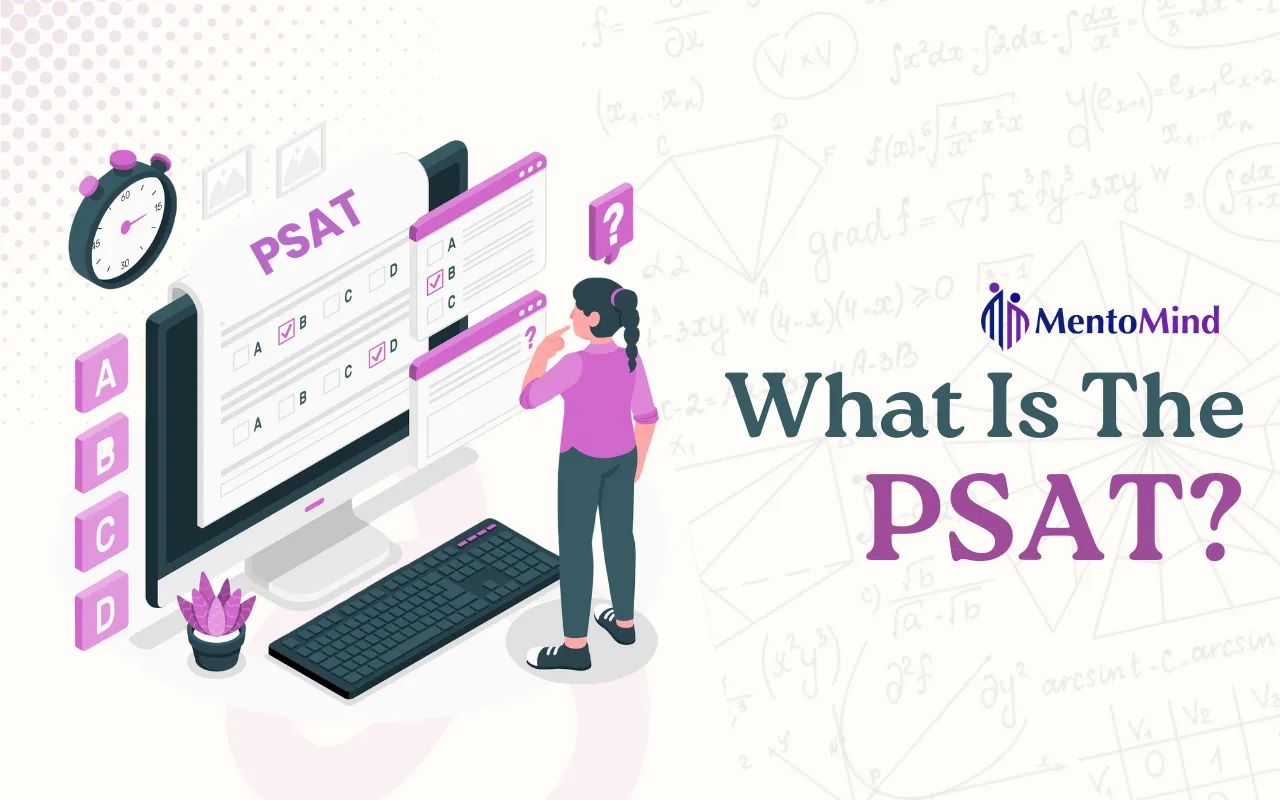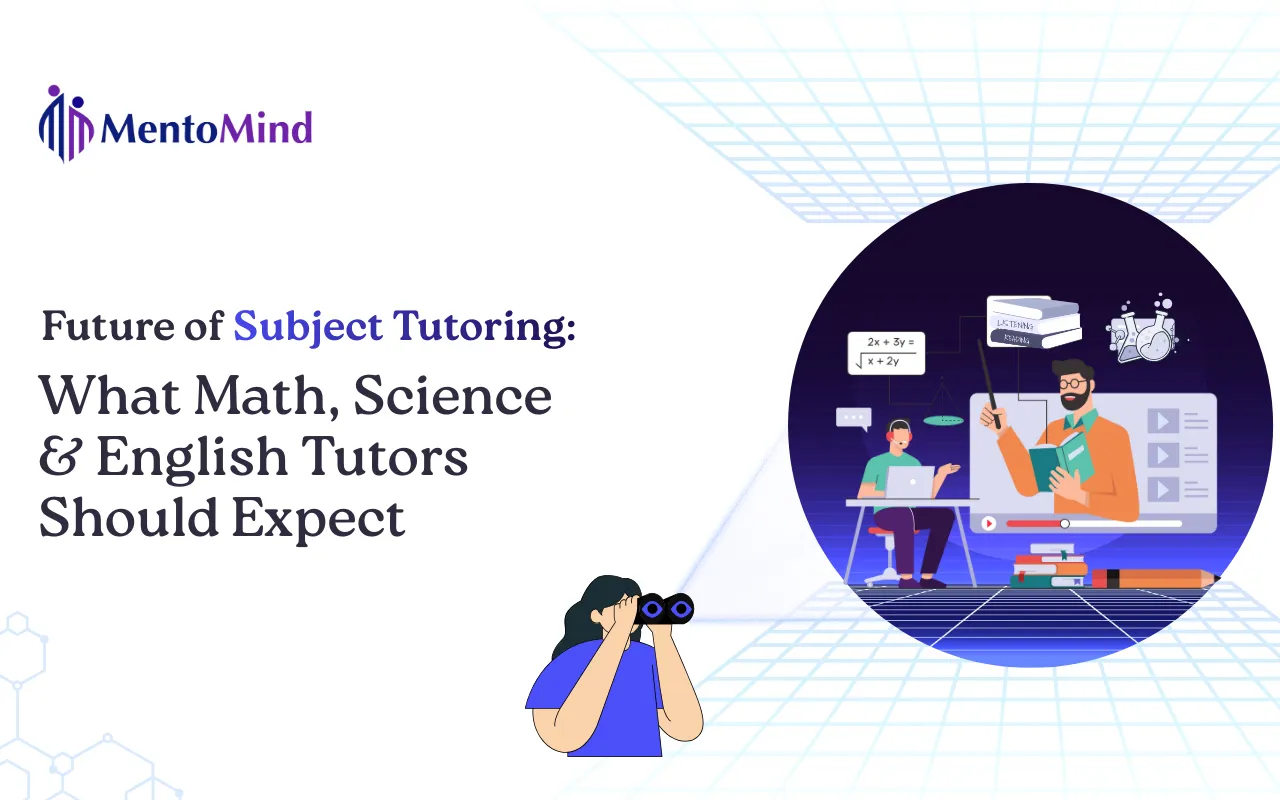The PSAT (Preliminary SAT/National Merit Scholarship Qualifying Test) is a multiple-choice standardized test offered by the College Board. It serves two key purposes:
- A practice run for the SAT or ACT
- Qualification for National Merit Scholarships (for 11th-grade test takers only)
It is not used for college admissions but helps identify academic strengths and areas for improvement. Because colleges never see your PSAT score, it’s a true “low-stakes” environment—perfect for working out pacing jitters before the high-stakes SAT.
Types of PSAT Exams
There are three PSAT versions, tailored for different grade levels:
- PSAT 8/9 – For 8th and 9th graders; establishes a baseline for college readiness
- PSAT 10 – For 10th graders; identical in content to PSAT/NMSQT but not scholarship-eligible
- PSAT/NMSQT – For 10th and 11th graders; used for National Merit qualification
The PSAT 10 and PSAT/NMSQT are identical in length and difficulty—the only difference is that the latter (taken in the fall of 11th grade) is the one that counts for National Merit.
What’s New in the Digital PSAT?
As of Fall 2023, the PSAT is completely digital with several important changes:
| Feature | Details |
| Format | Digital and adaptive |
| Duration | 2 hours, 14 minutes |
| Sections | Math, Reading & Writing (combined) |
| Score Range | 320–1520 |
| Test Dates | One time annually (October window set by schools) |
| Cost | $18 (often covered by schools) |
Key Digital Changes:
- Adaptive Testing: Question sets adjust in difficulty based on student responses.
- Shorter Test: Reduced by 30 minutes compared to previous paper version.
- Combined Verbal Section: Reading and Writing now merged into a single section.
- Full Calculator Use: Allowed for all math questions.
- Faster Results: Scores released within days.
Understanding the Digital PSAT Structure
Each section now appears in two computer-adaptive modules.
Your performance on Module 1 determines the difficulty of Module 2, so doing well early can boost your scoring ceiling. This adaptive format personalizes your test experience and affects your final score range significantly.
PSAT Timing: Digital vs. Retired Paper Version
Still seeing charts that show a 2h 45m run-time (60 min Reading, 35 min Writing, 25 min No-Calc Math, 45 min Calc Math)?
Those refer to the retired paper PSAT.
If your school is still using the legacy version, you’ll follow the longer paper-based format. Otherwise, you’ll take the shorter 2h 14m digital version.
Format Comparison Table:
| Test Type | Section | Time |
|---|---|---|
| Paper PSAT (Retired) | Reading | 60 minutes |
| Writing | 35 minutes | |
| No-Calculator Math | 25 minutes | |
| Calculator Math | 45 minutes | |
| Total Time | 2h 45m | |
| Digital PSAT | Reading & Writing (combined) | ~64 minutes |
| Math (adaptive) | ~70 minutes | |
| Total Time | 2h 14m |
PSAT Sections Breakdown
1. Reading & Writing
- Includes shorter passages, each with just one related question.
- Tests vocabulary in context, grammar, reasoning, and data interpretation.
- Question types are clustered under four skill buckets: Information & Ideas, Craft & Structure, Expression of Ideas, and Usage & Mechanics.
2. Math
- Covers algebra, problem solving, geometry, and basic trigonometry.
- Emphasizes real-world application and logic-based problem-solving.
- All questions are calculator-allowed.
- About 15 % of Math questions now come from geometry and trigonometry—double the proportion on the old paper test—so review SOH-CAH-TOA, radians, and circle theorems.
How Is the PSAT Scored?
- Score Range: 160–760 per section, totaling a max of 1520.
- Selection Index (for National Merit): Sum of the three test scores × 2.
- No Penalty for Guessing: Always answer every question.
Score Benchmarks (Grade-Based):
| Grade | Reading & Writing | Math |
| 8th | 390 | 430 |
| 9th | 410 | 450 |
| 10th | 430 | 480 |
| 11th | 460 | 510 |
What Is a Good PSAT Score?
- Average Scores:
- 835 for 8th graders
- 892 for 9th graders
- 959 for 10th graders (PSAT 10)
- 1044 for 11th graders (PSAT/NMSQT)
National Merit Qualification: Varies by state and year, but usually in the 1400+ range.
Latest percentile data: scoring 1060 as a 10th grader (1150-1160 as an 11th grader) places you in the 75th percentile, while 1370-1420 (1450-1480 for 11th) cracks the 99th.
Why Take the PSAT?
- Identify Strengths & Weaknesses for SAT prep
- Practice Timed Testing
- Experience Digital Adaptive Testing
- Access Scholarships via the National Merit program
Even though it’s a low-stakes test for most, high scorers in 11th grade can qualify for:
- National Merit $2,500 Scholarships
- Corporate-Sponsored Scholarships (up to $10,000/year)
- College-Sponsored Merit Awards
In total, roughly 7,500 Merit Scholarships are awarded each year—about 1,000 are corporate-funded, ~4,000 are renewable college awards ($500-$2,000 per year), and 2,500 are the one-time National Merit $2,500 grants.
How to Register for the PSAT
You cannot register for the PSAT online. Registration is handled by your high school. Speak with your school counselor well in advance, especially as test dates vary by school.
If your own school will not host the exam, the College Board’s PSAT School Search tool lets you locate nearby schools that accept outside test-takers (you must arrange this several weeks before the October window).
How to Prepare for the PSAT
Top Prep Strategies:
- Use Official Resources: Start with College Board tools.
- Practice Under Timed Conditions: Simulate the real test environment.
- Review Mistakes: Focus on patterns in wrong answers.
- Work on Pacing: The digital format gives more time per question, but managing time is still critical.
- Take a Diagnostic Test: This helps tailor your prep plan.

Free, auto-scored digital practice tests are already built into the Bluebook™ app—use them early so the interface feels second-nature on test day.
Final Thoughts
The PSAT is more than a practice test—it’s a stepping stone toward scholarship opportunities and college readiness. With the new digital format, test-takers must adapt their strategies but can also benefit from faster results and smarter preparation.
Call to Action

Sign up for Mentomind’s personalized test prep programs today and get expert guidance every step of the way.




